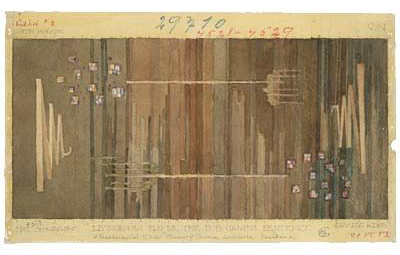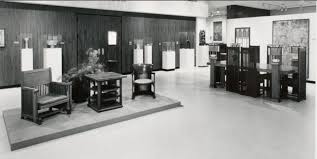THE ARTS AND CRAFTS MOVEMENT IN AMERICA 1876-1916
The Arts & Crafts world marked an important anniversary in 2022. It’s been fifty years since the first milestone exhibition dedicated to the Arts & Crafts movement brought together significant furniture, decorative arts, printed materials, and textiles made around the U.S. to recognize that turn of the century moment in American decorative arts. The exhibition was organized by the Princeton University Art Museum and traveled to the Art Institute of Chicago and the Renwick Gallery of the National Gallery of Fine Arts (as it was then called). The exhibition occurred at a time when the movement was having a significant revival as people rediscovered the “art of their grandfathers,” as so often happens in each generation.
Although no West Coast museum venues were included, designers and makers of California were well represented, thanks to the involvement of several familiar names from California: David Gebhard of UCSB and Robert W. Winter of Occidental College (among the house’s most dedicated friends and neighbors), along with early collectors, the Marrin and Leichti families, who had traded or lent Stickley furniture to the Gamble House.
The Gamble House itself, which had opened to the public only six years before, was exceptionally generous with loans to the exhibition. Randell Makinson, then the Director of the house for USC, clearly recognized the opportunity that was presented and seized on it to be sure that Greene & Greene, whose work he had championed since the 1950s, were written into the evolving story of the movement.
The Gamble House loaned several significant pieces to the show. A rug designed by Charles Greene—a side-runner from the living room–was displayed with one of his watercolor drawings that laid out the rugs’ design (from the UC Berkeley Environmental Design Archives). One of the many Gamble living room side chairs, with its tall, attenuated back-splat, made an appearance. From the Gambles’ bedroom, one of the pair of inlaid, black walnut beds was featured, alongside a night table and the chiffonier from the bedroom. The last piece, not by Greene & Greene, was the Gustav Stickley three-paneled oak and burlap screen from the Gamble family.

Other California designers and makers included Jewett Johnson from the Central Coast, Lucia and Arthur Matthews (The Furniture Shop, San Francisco) and master coppersmith Dirk Van Erp of Oakland.
This was likely the first exposure to Greene & Greene’s work for many people in the East and Midwest who saw the show. Robert Judson Clark’s catalog essay on “The Pacific Coast” notes that in 1893, “Charles and Henry Greene arrived in Pasadena and within a decade began designing the houses and furniture that made Pasadena famous as an architectural mecca before World War I.”[1]
It also established the Gamble House furnishings as the highest standard of what the Greenes and the Hall brothers, whose contribution also was noted, could achieve. Showing these pieces away from their architectural surroundings, on pedestals in the plain, white gallery setting, brought the focus to the materials and the details of the design.
The Stickley Museum at Craftsman Farms presented several programs in late 2022 that examined how the Princeton show came together and cast a critical eye on what it achieved and what was left for future generations to work out. The show was limited by what they could gather in the short amount of time given for its organization, and they relied heavily on the collections of people whom the curators knew. There was no introductory essay to lay out the overarching themes that the exhibition meant to convey or even to define the American Arts & Crafts movement. The pieces were left to speak for themselves (with brief regional and artist-specific essays), and the scholarship would follow in later years to explore the ideals, strengths, and pitfalls of the movement from a historical perspective. In the meantime, Greene & Greene took up a significant position that showed the strength of the movement in Southern California and their leading role in producing furniture of the highest quality in design and craftsmanship.
[1] Robert Judson Clark, ed., The Arts and Crafts Movement in in America, 1876-1916, Princeton, NJ: Princeton University Press, 1972, p. 82.

